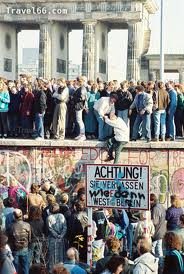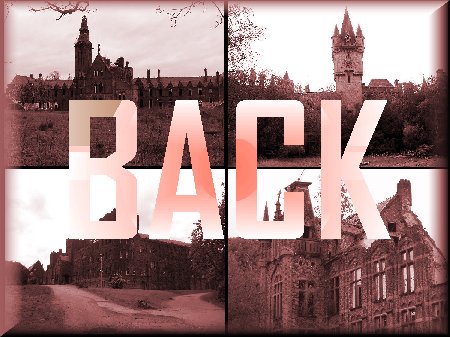|
  You
may already have read our pages covering the TB sanitaria around Berlin.
If so you will understand why it was so important to the newly emerging
nation of Germany at the turn of the 19th. - 20th. centuries, to ensure that it's population could increase without
hindrance. TB ravaged the world at that time and so the German nation
input a great deal of effort into the treatment of the disease and
searching for a cure. It was also important for Germany to ensure that as
many children as possible survived their early years to ensure the future
prosperity of the nation. To that end the construction of several state of
the art children's hospitals was proposed, and in 1909 in the district of Weißensee in Berlin, a large "Kinder Krankenhaus" was built to the design
of the architect Carl James Bühring. The primary purpose of this
particular hospital, known as the
"Säuglings und Kinderkrankenhaus
Weißensee", was to deal with the ever increasing number of births in
Berlin at that time and it was the first communal children's hospital in
Prussia. You
may already have read our pages covering the TB sanitaria around Berlin.
If so you will understand why it was so important to the newly emerging
nation of Germany at the turn of the 19th. - 20th. centuries, to ensure that it's population could increase without
hindrance. TB ravaged the world at that time and so the German nation
input a great deal of effort into the treatment of the disease and
searching for a cure. It was also important for Germany to ensure that as
many children as possible survived their early years to ensure the future
prosperity of the nation. To that end the construction of several state of
the art children's hospitals was proposed, and in 1909 in the district of Weißensee in Berlin, a large "Kinder Krankenhaus" was built to the design
of the architect Carl James Bühring. The primary purpose of this
particular hospital, known as the
"Säuglings und Kinderkrankenhaus
Weißensee", was to deal with the ever increasing number of births in
Berlin at that time and it was the first communal children's hospital in
Prussia.
In 1911 the site was increased
in size and more buildings were constructed, together with a farm to raise
dairy cattle. A milk processing plant was constructed so that babies who's
mother's could not feed them would still get high quality milk, as well as
providing for those older children in need of better nutrition. The
hospital soon became the best of it's gendre and as a centre of excellence
it soon took on the role of training doctors and nurses for the other
children's hospitals appearing at that time.
The dairy farm, despite
appearing on the face of it to be a good idea, was relatively short lived,
closing down in 1920 after only nine years operation. After World War II
the Soviet Union held on to much of east Germany - Berlin in particular -
and they continued to use the hospital for it's original purpose, adding a
new infirmary in 1987 only two years before the fall of the Berlin Wall -
BELOW RIGHT.
After the reunification of Germany the hospital continued for a short
time, however by 1997 it was very long in the tooth, and on January 1st.
it finally closed it's doors. It was sold to a property investor in 2006
and plans were made to turn it into a cancer hospital, but to date nothing
has been done. Originally a date for the start of re-construction was set
in 2011 however as can be clearly seen from our photographs taken towards
the end of that year in November, it is slowly rotting away with no sign
of any progress what so ever.
  The
hospital sits on a busy road running through Weissensee, almost directly
opposite a busy tram stop, and yet despite that it was very easy indeed
for us to gain access - all we had to do was step over a badly damaged
fence and we were immediately within the front yard outside the plant
complex. A short walk and a wobbly ditch crossing by plank, and we were
sprinting for the open side entrance to the main building! Once inside it
is immediately obvious that the original construction was to the usual
exacting German engineering standards which we had seen elsewhere around
Berlin. Apart from the effects of vandalism and some water damage in
places it is still very sound and it would take little in the way of
structural work to renovate at this time. The ward extension to the
immediate centre rear of the main building however has not faired quite so
well. There is a lot of graffiti everywhere on the site and the attic
space in the main building has become "Harry Ramp Central". Fortunately no
one was home when we were there but filthy bed rolls and a scattering of
personal belongings made it quite obvious that this area is lived in. In
the adjacent plant complex I pushed open a door and my nose was assailed
by the most appalling stench. I stuck my head in a little way and spotted
what appeared to be a human form lying on a filthy mattress under a
mouldering duvet - alive or dead I would not like to say but the
atmosphere in the room did not smell particularly healthy and there was no
way I was going to investigate further! The
hospital sits on a busy road running through Weissensee, almost directly
opposite a busy tram stop, and yet despite that it was very easy indeed
for us to gain access - all we had to do was step over a badly damaged
fence and we were immediately within the front yard outside the plant
complex. A short walk and a wobbly ditch crossing by plank, and we were
sprinting for the open side entrance to the main building! Once inside it
is immediately obvious that the original construction was to the usual
exacting German engineering standards which we had seen elsewhere around
Berlin. Apart from the effects of vandalism and some water damage in
places it is still very sound and it would take little in the way of
structural work to renovate at this time. The ward extension to the
immediate centre rear of the main building however has not faired quite so
well. There is a lot of graffiti everywhere on the site and the attic
space in the main building has become "Harry Ramp Central". Fortunately no
one was home when we were there but filthy bed rolls and a scattering of
personal belongings made it quite obvious that this area is lived in. In
the adjacent plant complex I pushed open a door and my nose was assailed
by the most appalling stench. I stuck my head in a little way and spotted
what appeared to be a human form lying on a filthy mattress under a
mouldering duvet - alive or dead I would not like to say but the
atmosphere in the room did not smell particularly healthy and there was no
way I was going to investigate further!
To the rear of the hospital
site the gardens have been reclaimed by nature and a wander through the
woods here takes you to what appears to be a tiny circular chapel. To the
right of the chapel is a free standing building which is in all likelihood
the infirmary constructed in the late 80s. All stark green tiles and
concrete corridors so typical of the utilitarian construction techniques
of the Deutsche Demokratische Republik,
it is a rather unpleasant place and it afforded us very few photographic
opportunities.
So, all in all the
Kinderkrankenhaus Weissense was not a brilliant exploration - and this is
reflected in the paucity of aesthetic photographs - however it was worth
doing if only to see for ourselves another example of the way that the
emerging German nation invested in it's future at the start of the
twentieth century.
The pix...
|
Below you
can view the best of the photographs which we took at this site. If you wish to view any of
these pictures in a much larger size then click on the thumbnail of
your choice and it will open a full size picture in a secondary
window...
To the right you can click
the back button and navigate back to our urbex index page...
|
 |
|